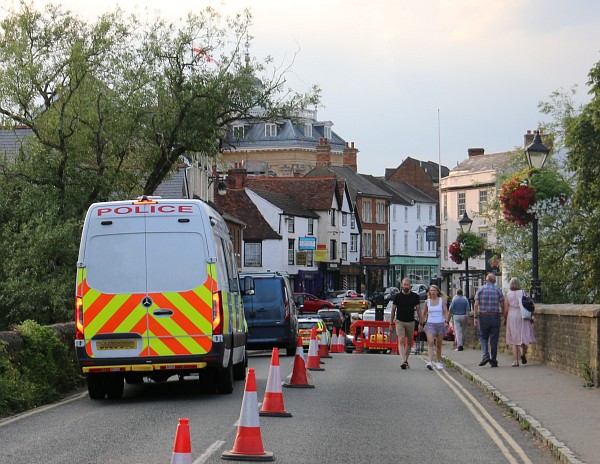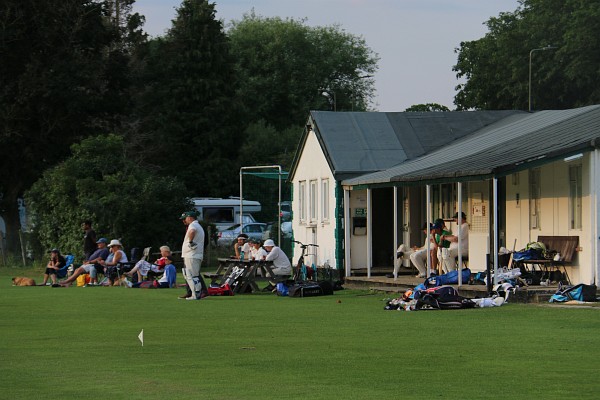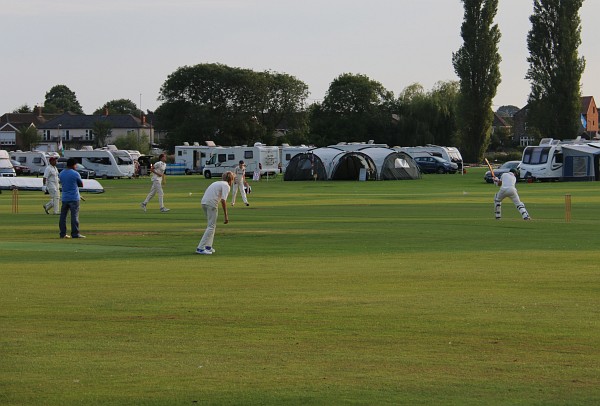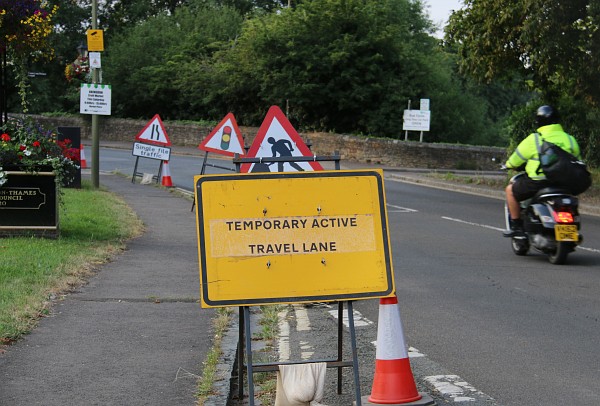
Campervans and caravans have returned to Hales Meadow for the summer holidays.

Minor repairs to the ancient Abingdon Bridge require the knowledge of heritage experts to proceed and this week the cones have been extended across the full span of the bridge to give pedestrians and cyclists more room.

On Hales Meadow, over Abingdon Bridge, there were spectators at Abingdon Vale Cricket Club pavilion along with batsmen awaiting their innings.

On the other side of the pitch were the campervans and caravans.

For traffic approaching the extended cones on Abingdon Bridge there is a sign that says ‘Temporary active travel lane’.

The wider pedestrian walkway is just what was needed during the first lockdown when people were going into the road, dangerously near traffic, to avoid other pedestrians coming the other way. Most of the cyclists were still going with the cars and lorries.
I think the change to the bridge traffic system is excellent at weekends, but is it really needed during the week when pedestrians are less and traffic more?!
Data Diarrhoea to add to all the visual display distractions inside modern vehicles !
Four signs, traffic lights, plus cones, and obscuring each other on a bend. Signal overload ?? What on earth is a “Temporary Active Travel Lane” ? Would a “Permanent Inactive Travel Lane” be a normal road ?
“Road works” and a lollipop person used to be quite sufficient.
Please keep up Spike. There has been plenty of discussion on social media and elsewhere about the 5 day experiment looking at the effect of encouraging active travel over the bridge (i.e. walking and cycling – although some cyclists have been critical of how the experiment has been implemented) over inactive travel (i.e. driving).
Ah, Abingdon Social Meeja. That’s the first place I would look for correct use of English, not.
It doesn’t excuse the sign overload faced by a non-local arriving at that bend.